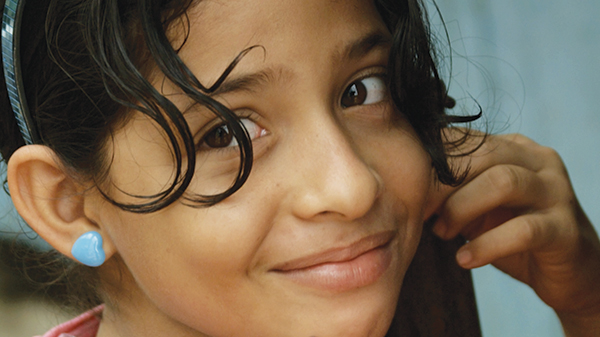
The term “inclusive education” is one that frightens some people with its implications.
How could teachers possibly make time for multiple lesson plans for different learning styles? How do we reach children with dyslexia in our reading programs? How do we teach children with vastly different achievement levels in one class?
Where is the funding?
Why is it our problem?
What would you say if we replaced “students with disabilities” with “girls” or “boys” or “children with low socio-economic status?” The answer is simple: you could not neglect to educate girls or boys. You could never refuse education to a child living in poverty.
Yet an estimated 84 to 135 million children with disabilities are out of school worldwide.
The international development community does very little to reach students with disabilities. And if we continue using the same models that have served us successfully for the past decade, we will continue to fail to reach these students.
The typical argument against inclusive education is the perceived high cost. But it is attitude rather than cost that truly limits the potential success of students with disabilities.
An inclusive model
The concept of Universal Design for Learning (UDL) is something international education practitioners can look to as we try to make learning more accessible and of higher quality for everyone.
UDL encourages educators to design curriculums, classrooms and programs with natural human variability in mind. Developed by Myere, Rose and Gordon, it is based on an understanding that the brain is comprised of three main networks.
The affective dictates how we monitor our internal and external environments to set priorities and engage with learning—or in other words, our motivation. The recognition determines how we sense and perceive information in our environment and turn it into usable knowledge. And the strategic informs how we plan, organize and initiate purposeful action.
Trends in neuroscience have demonstrated the complex nature of the brain and showed us that each individual student has vastly different abilities and experiences they bring to the classroom.
We can, and should, expect this variability and plan accordingly to deliver individualized learning for all students.
Rather than “retrofit” a lesson when a student with disabilities appears, we anticipate the student with disability and design our work accordingly.
With this kind of approach, students with disabilities are just one segment of a diverse population of children who deserve a tailored approach to learning.
Examples of success
In the United States, schools designed on an inclusive format have met with great success. For example in Boston, the Henderson School serves a student population wherein 34 percent have diagnosed disabilities.
Once one of the lowest performing schools in Massachusetts, the Henderson school has become one of the top performing elementary schools in the state. Teachers, staff and parents attribute the school’s success to the inclusive model. When you design a classroom so that the students who struggle most will succeed, everyone benefits.
In Brazil, the work of Diversa is demonstrating that inclusive education can be extended to all mainstream classrooms. With support from the Brazilian Ministry of Education and other organizations, Diversa connects educators via an online platform with ideas and best practices to help them accommodate students with disabilities through modified lesson plans and school activities.
The organization worked with the Colegio Coronel Pilar, for example, which now enrolls 67 students with disabilities out of its total population of 1042.
“In the school day to day we have 30 students in a room and effectively, each one has their place, timing way, and learning strategies,” says Eliana Menezes, a special education coordinator, in a video about the school’s inclusive approach.
“For a long time there was no such commitment to teach people with disabilities,” says Roberta Forgiarini, the Regional Education Coordinator. “Today we have this commitment.”
Designing for inclusive learning
Just as it is easier to build an office with an elevator than it is to add an elevator to an old and outdated building, so is it easier to design a project taking into consideration the wide spectrum of students who will be involved.
When designing a new project, using the guidelines of UDL can help prepare for students with disabilities. Not every project must meet the requirements of each learner, but keeping them in mind will help develop flexible learning environments.
After all, learning disabilities do not exist within the individual, but at the intersection between the individual and his or her environment.

